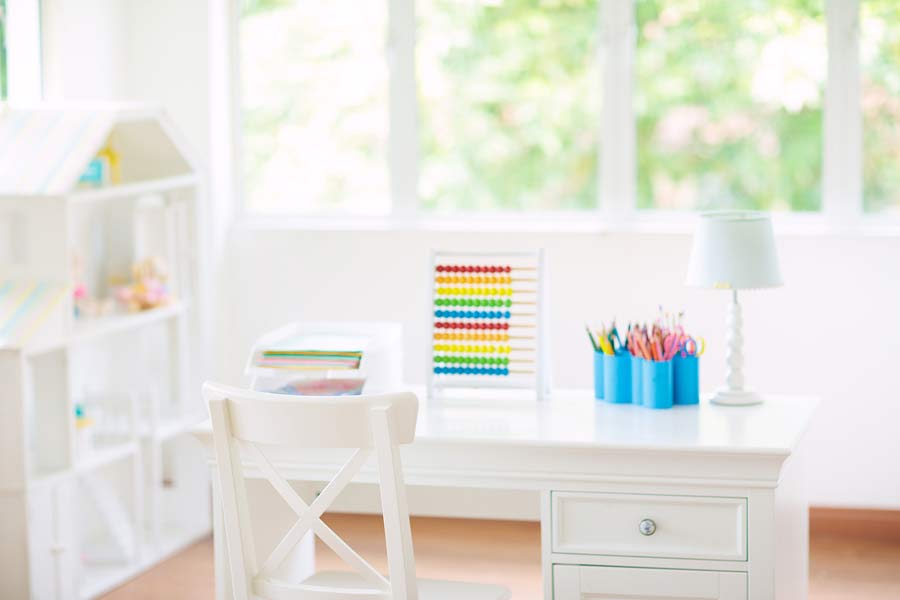Here is a truth that all educators in Pakistan are quite familiar with: some individuals are visual learners while others prefer a hands-on demonstration to grasp a new concept. Much like learning that takes place in the classroom, studying habits vary from person to person. Some prefer complete silence while they prepare for an upcoming quiz or test. There are others who would rather listen to a carefully curated playlist while reviewing their notes. A custom-designed study room, with separate desk areas, can accommodate multiple learners at the same time. Studies show that a dedicated study space boosts mental efficiency and focus.
The following are some aspects to consider while designing a study room:
Pick a Quiet Location

The study room’s location is an important factor while planning out home construction in Pakistan. Ideally, the study room should be situated in a quiet corner away from the hustle and bustle of everyday activities. If you have young children under the age of five, it is recommended that you set up a temporary learning space within the living room area. The whole idea is to pick a spot where kids can easily focus on their homework or other school-related tasks with minimal distractions.
Choose the Right Furniture

The type of furniture in the study room can make or break the eventual learning experience. A comfortable chair, a sturdy desk, and a bookshelf for additional storage space – these three furniture items can easily fulfill the minimum requirements. Ergonomists recommend chairs that will allow a child to sit in an upright position. The desk height must be so the child can move their legs freely without bumping them into the desk’s legs. Built-in wall storage is an excellent way to create a functional and comfortable study area. Storage boxes and desk drawers provide adequate space to keep all the necessary items your children need to get their homework done.
Adjust the Lighting

Adjustable lighting ensures a warm, inviting and functional atmosphere in the study room. A learning space should be well-lit using task lighting and glare-free study lamps. Ensure that the study space is properly lit by investing in daylight illumination products like OttLite bulbs. Such lighting systems are specifically designed to reduce eye strain. Ushering in natural light via big windows will not only help in saving electricity bills but also aid in maintaining good eye health. In a study room, one needs to strike the right balance between ambient lighting, task lighting, and accent lighting.
Smart by Design

There should be some bold accent colors in place to balance out neutral tones like gray-white, brown-black, and black-blue in the room. A pop of marigold yellow or electric blue can liven up the room without creating visual chaos. The hues that surround us have a profound impact on our mood and productivity. This makes the colors imperative to the study room’s ultimate success. Light colors such as blue and green are easy on the eyes and add a soothing effect to the room. Usually thought of as a ‘loud’ color, the orange color is known for boosting concentration. The walls can be painted in blues, greens, and soft yellows to provide a spa ‘vibe’. One wall can be accented with a bright colour to enhance productivity and concentration.
Aside from designing a study room, it is equally important to instill a passion for learning in your children. A well-designed learning space can spark their interest in learning about the world around them.